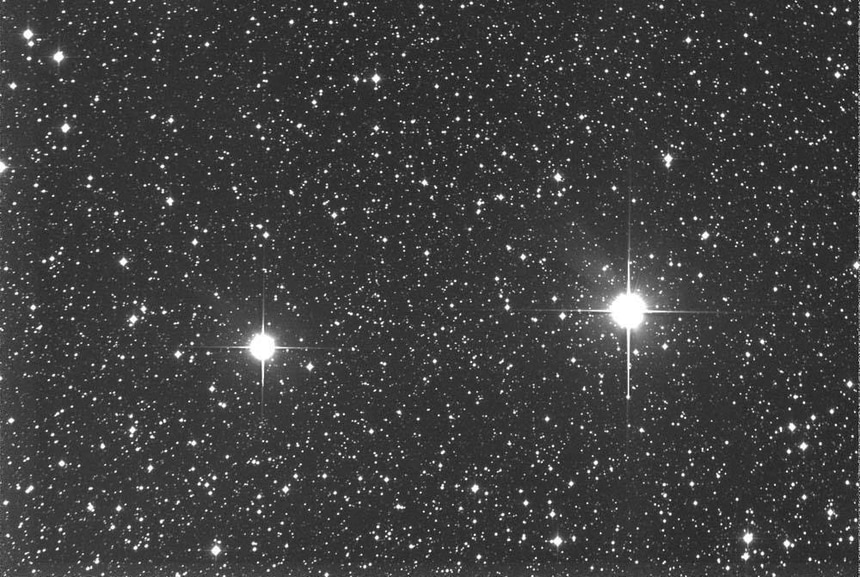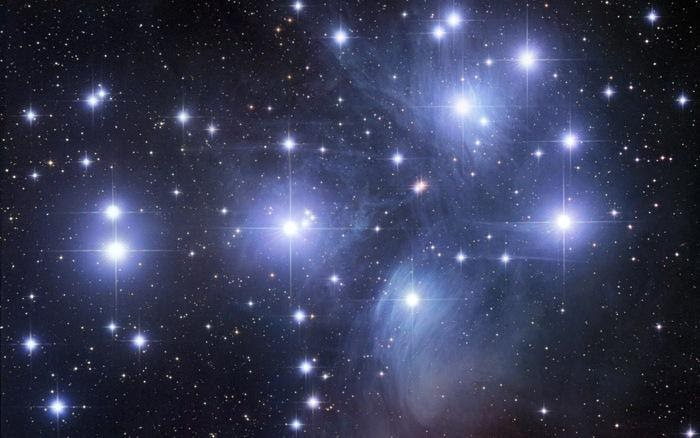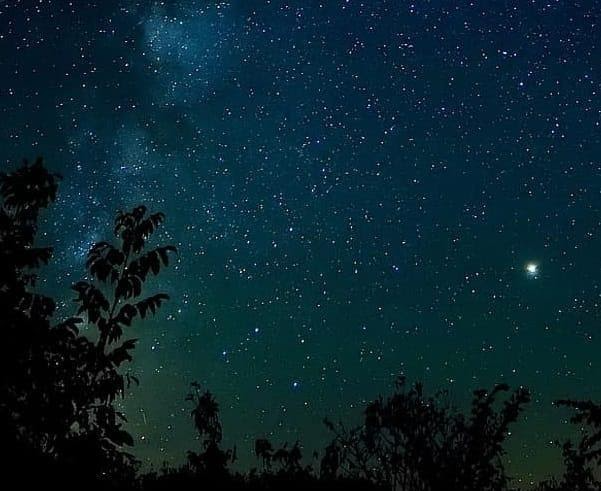Why Do Stars Twinkle - A Complete Guide
Looking upwards in the night sky, a star appears twinkling in the sky because of the phenomena atmospheric refraction. In this article, we will know why do stars twinkle at night, optical phenomenon included in twinkling of stars, why do stars twinkle but planets do not, why do stars seem higher in the sky than they actually are.
JEE Main 2025: Physics Formula | Study Materials | High Scoring Topics | Preparation Guide
JEE Main 2025: Syllabus | Sample Papers | Mock Tests | PYQs | Study Plan 100 Days
NEET 2025: Syllabus | High Scoring Topics | PYQs

Why stars twinkle/shine at night
In class 10, we will find, which reason is responsible for twinkling of stars that is , why do stars twinkle.
We will first explain atmospheric refraction and will see a daily life example to see the wonders of this phenomenon.

Also read -
- NCERT Solutions for Class 11 Physics
- NCERT Solutions for Class 12 Physics
- NCERT Solutions for All Subjects
Atmospheric refraction
When we observe objects seen through a turbulent stream of hot air rising above a fire or a heat radiator, the objects appears to be flickering. The air just above the fire becomes hotter than the air farther up. The hotter air just above the fire is lighter than the cooler air above it. Thus, the hotter air just above the fire has a refractive index which is slightly less than that of the cooler air farther up. Since the air(I.E the refractive medium) is not stationary, the apparent position of an object as seen through the hot air fluctuates and causes flickering of the object, this wavering is an example of atmospheric refraction in the local environment of our laboratory .
Now, I hope that this phenomenon of atmospheric refraction is very clear to you after this example.

Coming back to,
why do stars flicker?
When we look at a star on a clear night, the intensity of light coming from it appears to be continuously fluctuating (twinkling of stars in normal language).
At one moment, a star appears to be quite bright but at a very next moment, the star becomes dim and so on, this random fluctuation in observed brightness of a star is known as twinkling of stars.The twinkling of a star is on account of atmospheric refraction of light coming from the star.
When light coming from a star enters the earth’s atmosphere, it undergoes atmospheric refraction on account of varying optical density of air at different heights. The continuously changing atmosphere refracts the light from a star by different amounts in different atmospheric layers.

When the atmosphere refracts more light coming from a star to an observer, he feels star to be bright however when the atmosphere reflects less light to an observer, he feels the star to be dim so the star light reaching an observer’s eye changes randomly due to atmospheric refraction and the stars appears to be twinkling.
Related Topics Link, |
Why do stars twinkle but planets do not?
So, the question arises why not planets twinkle like stars at night. The star is the situated very distant from the earth and behaves approximately as a point-sized source, goes on varying slightly due to atmospheric refraction, the amount of light entering the eye flickers and the star twinkles.

The planets are much closer to the earth and thus seen as extended sources so a planet may be considered as a collection of a large number of points sized sources of light although amount of light coming from each point sized source flickers on account of atmospheric refraction yet the total amount of light entering our eye from all the individual point sized sources of the extended source will practically remain unchanged therefore planets do not twinkle but stars do.
Now let’s see how the phenomena of atmospheric refraction also changes the apparent position of a star and hence appears slightly higher than its actual position.
Also Read:
- NCERT solutions for Class 12 Physics Chapter 9 Ray Optics and Optical Instruments
- NCERT Exemplar Class 12 Physics Solutions Chapter 9 Ray Optics and Optical Instruments
- NCERT notes Class 12 Physics Chapter 9 Ray Optics and Optical Instruments
Why do stars seem higher in the sky than they actually are?
We now know that refractive index of atmospheric air is maximum just near the surface of the earth and gradually decreases as one goes above the earth.
When starlight enters the earth’s atmosphere the light rays are travelling from optically rarer layers to optically denser layers. As a result, on Account of atmospheric refraction.

The light rays bend more and more towards the normal as they approach an observer on the earth. As a result of this bending of light towards normal, a star appears slightly higher or above then its actual position when viewed near the horizon.
Now, we have studied why do stars twinkle or twinkling of stars occurs due to which phenomena, atmospheric refraction and it’s example from our routine, why planets do not twinkle and why do stars seem higher in the sky.
Also check-
- NCERT Exemplar Class 11th Physics Solutions
- NCERT Exemplar Class 12th Physics Solutions
- NCERT Exemplar Solutions for All Subjects
NCERT Physics Notes:
Frequently Asked Questions (FAQs)
A star is a huge sphere of celestial luminous body made up of gaseous (hydrogen and helium) plasma. Nuclear reactions inside the stars make stars alive and a luminous body. As soon as this fuel for nuclear reaction is used up, stars die because of their own gravitational force.
Yes, sun is our nearest star and the only star of our solar system.
No, the colour of a star depends upon the intensity of heat at the core that is its temperature. Hotter the star, more blue rays it emits. As temperature goes down its colour shifts towards red.Though most of the stars emits colour of all wavelengths. Stars appears to be white because are eyes are senistive to this only for blue rays.
At younger age there is plenty of fuel in stars the emit enormous energy hence less wavelength or more frequency waves are emitted. This is the reason why younger stars look bluish and old stars look reddish in colour.
According to the, doppler effect in light as we go farther than the source. Wavelength of the object decreases with respect to the source. Hence, as stars go farther from us, they appears to be red in colour.
Actual age of the star cannot be calculated precisely. Hence, can be estimated only. Also, the age of stars are categorised on the basis of the type of stars.
Total number of rays coming out of star per unit area is calculated to find the luminiousity and hence, the temperature of the stars is estimated.
Stars nursery or stellar nursery is the space filled with dust and clouds of gases of dead stars through the fusion of elements. Here, is the stars born in middle of outburst of stars called supernovas.
Generally, nebula are known to be the birthplace of the stars.
Also Read
05 Feb'25 04:41 PM
30 Nov'24 01:19 PM
29 Nov'24 05:26 PM
29 Nov'24 02:40 PM
29 Nov'24 01:21 PM
28 Nov'24 04:42 PM
28 Nov'24 01:26 PM
28 Nov'24 01:21 PM
26 Nov'24 03:50 PM
22 Nov'24 01:31 PM